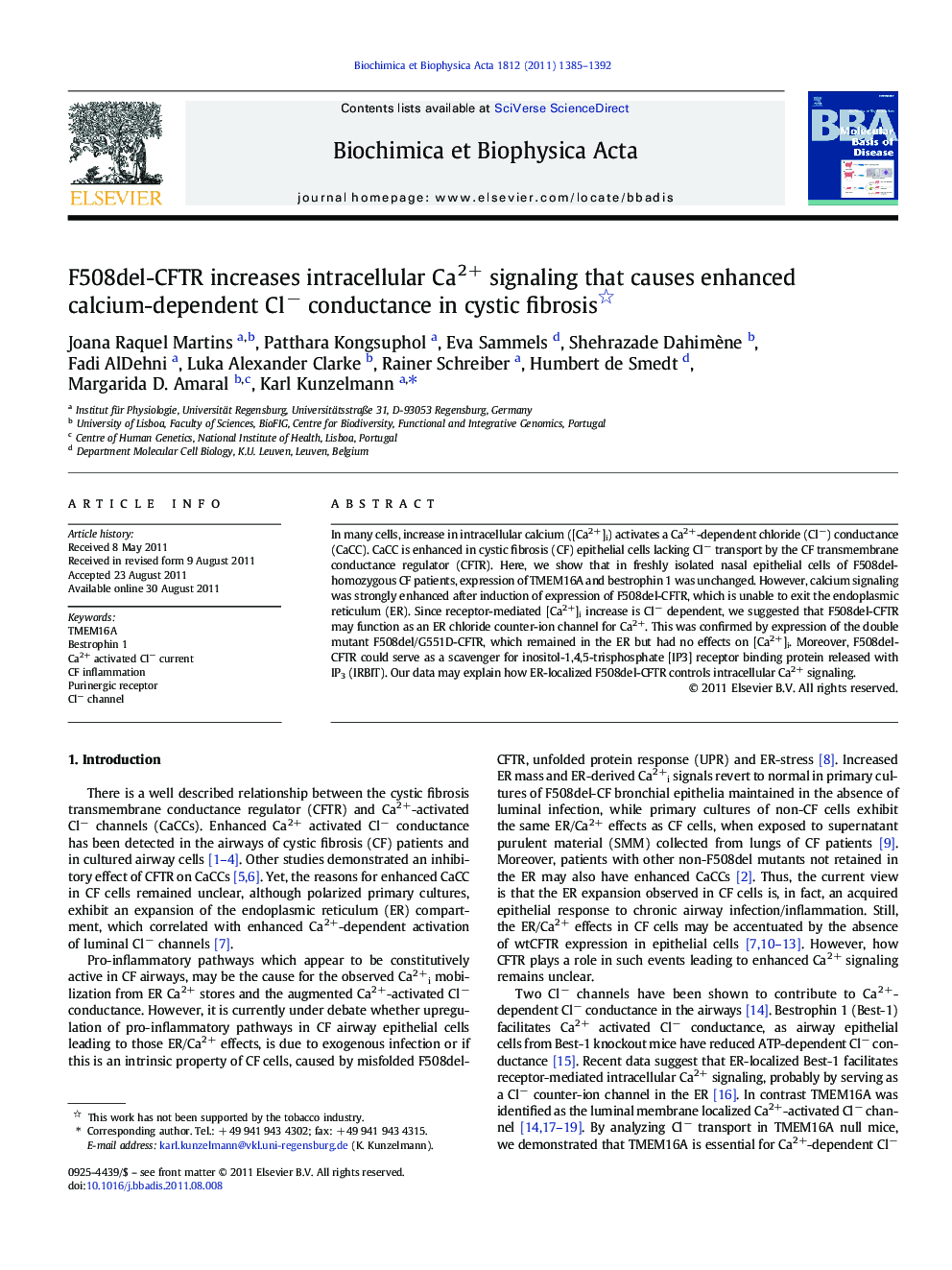| Article ID | Journal | Published Year | Pages | File Type |
|---|---|---|---|---|
| 1905109 | Biochimica et Biophysica Acta (BBA) - Molecular Basis of Disease | 2011 | 8 Pages |
In many cells, increase in intracellular calcium ([Ca2+]i) activates a Ca2+-dependent chloride (Cl−) conductance (CaCC). CaCC is enhanced in cystic fibrosis (CF) epithelial cells lacking Cl− transport by the CF transmembrane conductance regulator (CFTR). Here, we show that in freshly isolated nasal epithelial cells of F508del-homozygous CF patients, expression of TMEM16A and bestrophin 1 was unchanged. However, calcium signaling was strongly enhanced after induction of expression of F508del-CFTR, which is unable to exit the endoplasmic reticulum (ER). Since receptor-mediated [Ca2+]i increase is Cl− dependent, we suggested that F508del-CFTR may function as an ER chloride counter-ion channel for Ca2+. This was confirmed by expression of the double mutant F508del/G551D-CFTR, which remained in the ER but had no effects on [Ca2+]i. Moreover, F508del-CFTR could serve as a scavenger for inositol-1,4,5-trisphosphate [IP3] receptor binding protein released with IP3 (IRBIT). Our data may explain how ER-localized F508del-CFTR controls intracellular Ca2+ signaling.
► Enhanced Ca2+ activated Cl− currents in CF is not caused by enhanced expression of TMEM16A and bestrophin 1. ► Calcium signaling was enhanced after induction of expression of F508del-CFTR. ► Receptor-mediated [Ca2+]i increase is enhanced by F508del-CFTR which serves as counter-ion channel for Ca2+ in the ER. ► The double mutant F508del/G551D-CFTR remains trapped in the ER but has no effects on [Ca2+]i.► Ca2+ signaling and Ca2+ dependent Cl− conductance are enhanced in CF cells independent of infection.
